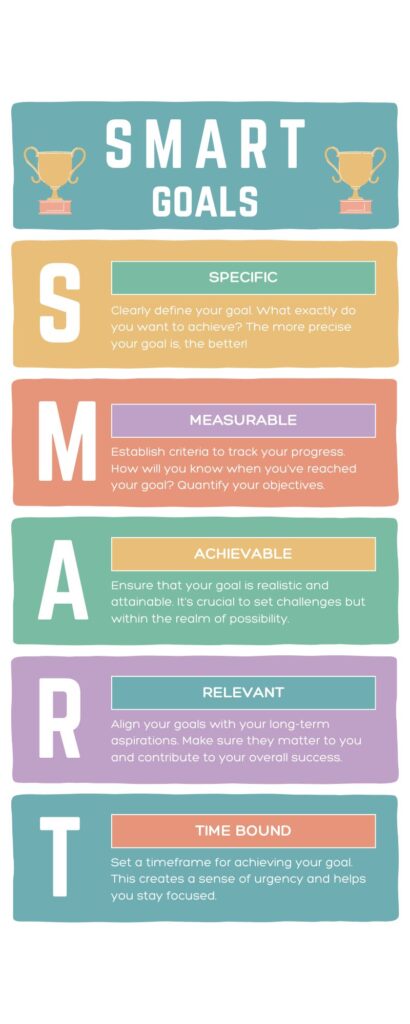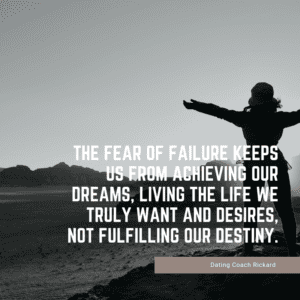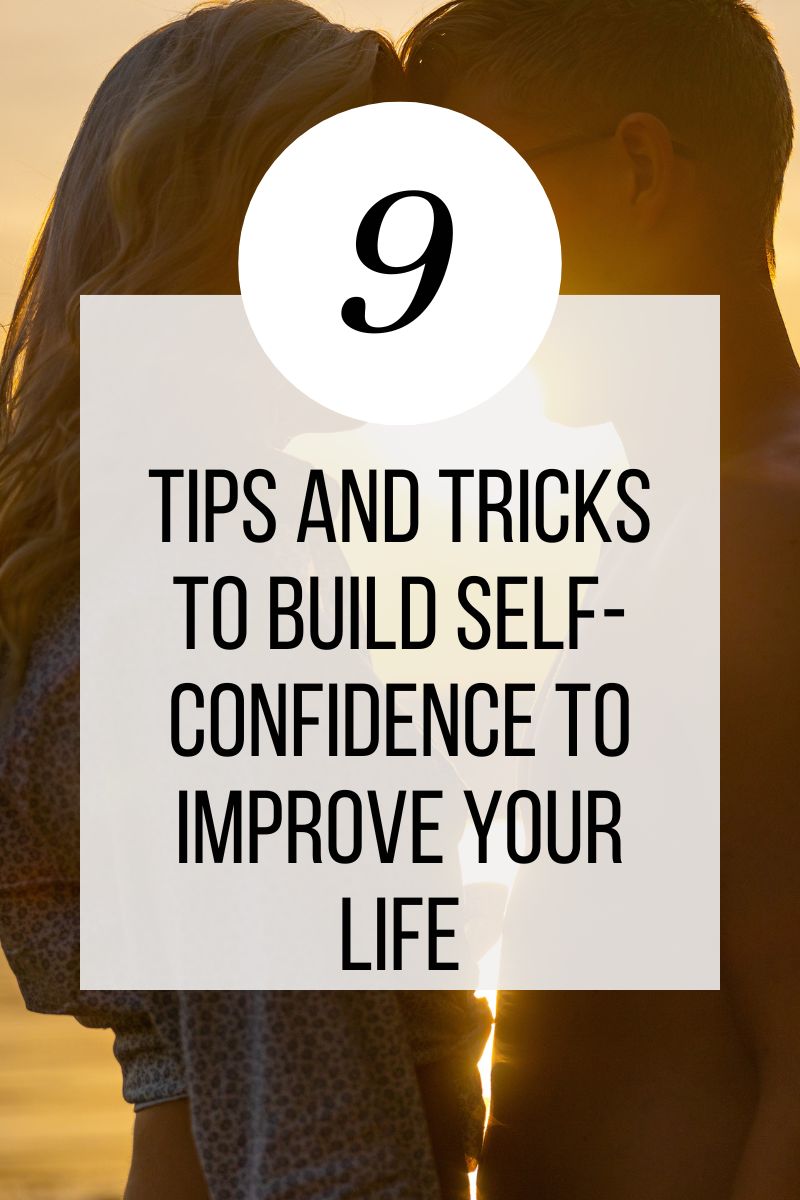We are a professional review company that receives compensation from companies whose products we review. We test each product thoroughly and give high marks only to the ones that are the very best. We are independently owned, and the opinions expressed here are our own.
Self-confidence is a crucial aspect of personal and professional success. It influences how we perceive ourselves, how we interact with others, and how we tackle challenges. Confident individuals are likelier to take risks, pursue their goals, and overcome obstacles. However, building and maintaining self-confidence is an ongoing process that requires self-awareness, effort, and practice.
In this article, we will explore various tips and techniques to help you build self-confidence. From identifying your strengths and setting realistic goals to practicing positive thinking and improving your body language, these strategies will empower you to enhance your self-esteem and face life’s challenges with greater assurance. Whether you’re looking to boost your confidence in social situations, work, or personal endeavors, these practical tips will guide you to becoming more confident and self-assured.
Understanding Self-Confidence

Definition of Self-Confidence
Self-confidence refers to a person’s belief in their abilities, qualities, and judgment. It’s about trusting oneself and feeling assured that you can handle different situations effectively. Self-confidence is not innate but a skill that can be developed and strengthened over time.
Self-Confidence vs. Self-Esteem
While self-confidence and self-esteem are often used interchangeably, they are distinct concepts. Self-confidence is specific to how capable you feel about particular skills or tasks, whereas self-esteem refers to your overall sense of self-worth. A person can be confident in their abilities yet have low self-esteem, or vice versa.
Why Self-Confidence is Crucial
Self-confidence plays a vital role in various aspects of life:
- Personal Growth: Confidence encourages you to take risks and step out of your comfort zone, which is essential for personal development.
- Professional Success: In the workplace, confident individuals are more likely to take on challenges, lead projects, and communicate effectively.
- Social Interactions: Confidence affects how you interact with others. It can help you build and maintain relationships, express your opinions, and easily handle social situations.
- Mental Health: High self-confidence is linked to better mental health. It can reduce feelings of anxiety, improve mood, and promote a more positive outlook on life.
Understanding these distinctions and the importance of self-confidence sets the stage for learning how to build and enhance it effectively.
References:
- Indeed – Building Self-Confidence
- Verywell Mind – How to Boost Your Self-Confidence
- Mind Tools – Building Self-Confidence
Next, we will explore practical techniques for identifying one’s strengths and weaknesses, which are crucial in building self-confidence.
Identifying Your Strengths and Weaknesses
Understanding your strengths and weaknesses is a crucial step in building self-confidence. This self-awareness allows you to leverage your strengths and address your weaknesses, improving self-esteem and confidence.
Technique 1: Self-Assessment
Conducting a personal SWOT analysis (Strengths, Weaknesses, Opportunities, Threats) can provide valuable insights into your capabilities and areas for improvement.
- Strengths: Identify what you excel at, such as specific skills, talents, and positive traits.
- Weaknesses: Acknowledge areas where you struggle or lack confidence.
- Opportunities: Recognize external factors that you can leverage to improve and grow.
- Threats: Be aware of external challenges that could hinder your progress.
By regularly performing a SWOT analysis, you can maintain a clear understanding of your current position and what you need to work on.
Technique 2: Seeking Feedback
Asking for honest feedback from trusted friends, family, or colleagues can provide a different perspective on your strengths and areas for improvement. Constructive criticism can help you identify blind spots and gain a more balanced view of your abilities.
- Ask Specific Questions: Inquire about specific skills or behaviors for targeted feedback.
- Be Open to Criticism: Accept feedback with an open mind and use it as an opportunity for growth.
- Act on Feedback: Implement the suggestions and monitor your progress over time.
Technique 3: Reflecting on Past Successes
Keeping a journal of past achievements and positive experiences can boost your self-confidence. Reflecting on these successes reminds you of your capabilities and strengths.
- Document Achievements: Write down accomplishments, no matter how small. Include personal, academic, and professional successes.
- Review Regularly: Review your journal to remind yourself of your strengths and progress.
- Learn from Successes: Analyze what contributed to your achievements and how you can replicate those strategies in other areas.
Resources
For more insights on identifying your strengths and weaknesses, visit these sources:
- Mind Tools – Personal SWOT Analysis: Templates and Examples
- Forbes – What Is a SWOT Analysis? Download Our Template
- WordStream – How to Do a SWOT Analysis (Examples & Template)
Identifying your strengths and weaknesses is a foundational step in building self-confidence. By conducting self-assessments, seeking feedback, and reflecting on past successes, you can better understand your capabilities and areas for growth. This self-awareness will empower you to build on your strengths and address your weaknesses, ultimately enhancing your confidence.
Setting Realistic Goals

Setting realistic goals is a fundamental technique for building self-confidence. Achieving these goals provides a sense of accomplishment and reinforces one’s belief in one’s abilities. Here are some practical methods for setting and achieving goals to boost confidence.
Technique 1: SMART Goals
SMART goals are Specific, Measurable, Achievable, Relevant, and Time-bound. This framework ensures that your goals are clear and attainable, which increases your chances of success.
- Be specific. Define your goal clearly. For example, instead of saying, “I want to be fit,” specify, “I want to run a 5k marathon.”
- Measurable: Ensure your goal is measurable so you can track your progress. For instance, “I want to lose 10 pounds in three months.”
- Achievable: Set goals that are realistic and within your capacity to achieve. This means considering your current situation and resources.
- Relevant: Your goal should apply to your objectives and be aligned with your values.
- Time-bound: Set a deadline for your goal. This creates a sense of urgency and helps keep you focused.
Technique 2: Breaking Down Goals
Significant goals can be overwhelming and intimidating, hindering progress and confidence. Breaking these goals into smaller, manageable tasks can make them more attainable and less daunting.
- Identify Milestones: Break your main goal into smaller milestones. For example, if you want to write a book, set milestones for completing each chapter.
- Create a Step-by-Step Plan: Outline the steps needed to reach each milestone. This will make the process less overwhelming and provide a clear roadmap.
- Focus on One Step at a Time: Concentrate on completing one task at a time. This helps maintain focus and prevents you from feeling overwhelmed by the bigger picture.
Technique 3: Celebrating Small Wins
Recognizing and celebrating small achievements is essential for maintaining motivation and building self-confidence.
- Acknowledge Progress: Take time to acknowledge and celebrate each small victory. This reinforces your progress and keeps you motivated.
- Reward Yourself: Treat yourself to something enjoyable when you reach a milestone. This could be a favorite treat, a day off, or any small reward that makes you feel good.
- Reflect on Successes: Reflect on what you did well and how you overcame challenges. Use these reflections to fuel your confidence and apply the lessons to future goals.
Resources
For more insights on setting realistic goals and achieving them, visit these sources:
- Mind Tools – How to Write SMART goals, with examples
- Indeed – How to Write SMART Goals in 5 Steps (With Examples)
- Forbes – The Ultimate Guide to SMART Goals
Setting realistic goals is a powerful strategy for building self-confidence. Using the SMART framework, breaking down significant goals, and celebrating small wins, you can create a structured path to success and reinforce your belief in your abilities. These techniques help you stay focused, motivated, and confident as you work towards achieving your goals.
Positive Thinking and Visualization
Positive thinking and visualization are powerful techniques for building self-confidence. By fostering a positive mindset and visualizing success, you can boost your self-esteem, reduce anxiety, and enhance your performance in various areas of life.
Technique 1: Affirmations
Affirmations are positive statements that can help you challenge and overcome negative thoughts. When repeated regularly, they can help you build a more optimistic outlook and increase your self-confidence.
- Create Personal Affirmations: Write positive statements about yourself, such as “I am confident and capable in my abilities” or “I can handle whatever comes my way.”
- Repeat Daily: Repeat your affirmations daily, especially in the morning or before challenging situations. Consistency is vital to internalizing these positive messages.
- Believe in Your Words: Say your affirmations with conviction. Believing in the words you say helps reinforce their impact on your mindset.

Technique 2: Visualization
Visualization involves imagining yourself achieving your goals and succeeding in various situations. This mental rehearsal can enhance your confidence and prepare you for real-life scenarios.
- Create a Clear Image: Visualize specific scenarios where you want to feel more confident. Picture yourself successfully navigating these situations with confidence and ease.
- Use All Senses: Engage all your senses in your visualization. Imagine the sights, sounds, and feelings associated with your success. This makes the visualization more vivid and powerful.
- Practice Regularly: Set aside time each day for visualization. Regular practice helps ingrain these positive images in your mind, making them more likely to come true.
Technique 3: Reframing Negative Thoughts
Negative self-talk can undermine your confidence and hold you back. Reframing involves changing how you think about and interpret situations, shifting from a negative to a positive perspective.
- Identify Negative Thoughts: Pay attention to the negative thoughts that arise throughout the day. Write them down to increase your awareness.
- Challenge Negative Thoughts: Question the validity of your negative thoughts. Are they based on facts, or are they irrational fears and assumptions?
- Replace with Positive Thoughts: Replace negative thoughts with positive, constructive ones. For example, change “I can’t do this” to “I will do my best and learn from the experience.”
Resources
For more insights into positive thinking and visualization, visit these sources:
- Good Reads – The Power of Positive Thinking By Norman Vincent Peale
- Verywell Mind – What Is Positive Thinking?
- Mayo Clinic – Positive thinking: Stop negative self-talk to reduce stress
- Tony Robbins – How to benefit from positive thinking
- Chi Rho Dating – The Power of Positivity
Positive thinking and visualization are effective techniques for boosting self-confidence. By incorporating affirmations, practicing visualization, and reframing negative thoughts, you can cultivate a more optimistic mindset and enhance your self-esteem. These practices help you approach challenges with confidence and resilience, paving the way for tremendous success and fulfillment in various aspects of life.
Building Competence and Skills

Developing competence and honing your skills are vital for building self-confidence. You naturally feel more capable and assured when you become proficient in specific areas. Here are some techniques to help you build competence and self-confidence.
Technique 1: Continuous Learning
Engaging in lifelong learning and skill development is essential for staying relevant and competent personally and professionally.
- Take Courses: Enroll in courses that interest you or are relevant to your career. Online platforms like Coursera, Udemy, and LinkedIn Learning offer various courses.
- Read Regularly: Read books, articles, and journals related to your field or personal interests. This keeps you informed and expands your knowledge base.
- Attend Workshops and Seminars: Participate in workshops, seminars, and conferences to gain new insights, network with professionals, and enhance your skills.
Technique 2: Practicing New Skills
Applying new skills in real-life scenarios is crucial for building competence and confidence.
- Set Practice Goals: Set specific goals for practicing new skills. For instance, if you are learning a new language, aim to practice speaking with native speakers regularly.
- Seek Opportunities: Look for opportunities to apply your skills in various settings. This could include volunteering, internships, or taking on new projects at work.
- Monitor Progress: Track your progress and celebrate improvements. Regular practice and feedback help you refine your skills and boost your confidence.
Technique 3: Seeking Mentorship
Finding a mentor who can provide guidance and support can accelerate your skill development and confidence building.
- Identify Potential Mentors: Look for individuals with expertise in the areas you want to develop. This could be someone at work, in your network, or a professional mentor.
- Build a Relationship: Approach potential mentors respectfully and express your interest in learning from them. Build a genuine relationship based on mutual respect and shared goals.
- Learn from Their Experience: Leverage your mentor’s knowledge and experience to guide your development. Ask for feedback, advice, and insights to help you grow.
Resources
For more insights on building competence and skills, visit these sources:
- UNESCO Institute for Life-Long Learning – Sweden: The Swedish Strategy for Life-Long Learning
- University of Cincinnati – 4 reasons to become a life-long learner for the New Year
- Harvard University: Professional and Life-Long Learning
Building competence and honing your skills are essential steps in boosting self-confidence. You can develop a strong sense of competence and assurance by continuously learning, practicing new skills, and seeking mentorship. These techniques help you stay relevant, improve your performance, and approach challenges with greater confidence, ultimately leading to personal and professional success.
Body Language and Physical Presence

Body language and physical presence significantly impact how others perceive you and, more importantly, how you perceive yourself. Confident body language can boost your self-assurance and help you project confidence in various situations.
Technique 1: Power Posing
Power posing involves adopting expansive, open postures that can help increase feelings of confidence and reduce stress.
- Practice Power Poses: Stand tall with your feet apart, shoulders back, and hands on your hips or raised above your head. Hold these poses for a few minutes before important events like meetings or presentations.
- Benefits: Power poses can help reduce cortisol (the stress hormone) and increase testosterone (the confidence hormone), making you feel more assertive and confident.
Technique 2: Eye Contact and Smiling
Maintaining eye contact and smiling can make you appear more confident and approachable. These behaviors also help build rapport and trust with others.
- Maintain Eye Contact: When speaking with someone, maintain eye contact for 60-70% of the conversation. This shows that you are engaged and confident.
- Smile Naturally: Smiling can make you and those around you feel more at ease. It conveys friendliness and confidence.
- Practice: If eye contact feels challenging, practice in front of a mirror or with a trusted friend. Gradually increase the duration to build comfort and confidence.
Technique 3: Dressing Confidently
The way you dress can influence your confidence levels. Wearing clothes that make you feel good about yourself can enhance your self-esteem and help you project confidence.
- Choose Clothes that Fit Well: Wear clothes that fit well and make you feel comfortable. Avoid overly tight or loose clothing, which can affect your comfort and confidence.
- Dress for the Occasion: Select outfits appropriate for the occasion. Dressing appropriately can help you feel more confident in various settings, from professional meetings to social events.
- Express Your Style: Incorporate elements of your style into your wardrobe. This can boost your confidence and allow you to express your individuality.
Resources
For more insights on body language and physical presence, visit these sources:
- Chi Rho Dating – Top 10 Things a Man Is Attracted to You
- Harvard Business Review – Power Posing: Brief Nonverbal Displays Affect Neuroendocrine Levels and Risk Tolerance
- Mind Tools – Beyond Words: Understanding Body Language
Body language and physical presence play a crucial role in building self-confidence. Practicing power poses, maintaining eye contact and smiling, and dressing confidently can enhance your self-assurance and project a confident demeanor. These techniques help you feel more empowered and make a positive impression in personal and professional settings.
Overcoming Fear and Taking Risks

Overcoming fear and taking calculated risks are essential components of building self-confidence. Confronting your fears and stepping out of your comfort zone can lead to personal growth and increased self-assurance.
Technique 1: Gradual Exposure
Gradual exposure involves facing your fears step by step, allowing you to build confidence gradually and reduce anxiety.
- Identify Your Fears: Start by identifying specific fears that hold you back. This could be fear of public speaking, social interactions, or trying new activities.
- Create a Plan: Break down your fears into smaller, manageable steps. For example, if you fear public speaking, start by speaking in front of a minor, supportive group before progressing to larger audiences.
- Take Small Steps: Gradually expose yourself to your fears in controlled environments. As you become more comfortable, the difficulty of the tasks increases.
- Celebrate Progress: Acknowledge and celebrate each step you take towards overcoming your fears. This reinforces your progress and motivates you to keep going.
Technique 2: Embracing Failure
Viewing failure as a learning opportunity rather than a setback can help you build resilience and confidence.
- Change Your Perspective: Shift your mindset to see failure as a natural part of the learning process. Understand that everyone experiences setbacks and that they are growth opportunities.
- Learn from Mistakes: Analyze your failures to understand what went wrong and how you can improve. Use these insights to refine your approach and try again.
- Stay Persistent: Keep trying despite setbacks. Persistence is key to overcoming fear and achieving success.
Technique 3: Building Resilience
Resilience is the ability to bounce back from challenges and setbacks. Developing resilience helps you maintain confidence even when facing difficulties.
- Develop Coping Strategies: Identify strategies that help you cope with stress and setbacks. This could include mindfulness, exercise, or talking to a trusted friend.
- Maintain a Positive Attitude: Focus on the positive aspects of your experiences and remind yourself of your strengths and achievements.
- Stay Connected: Build a support network of friends, family, or mentors who can offer encouragement and advice during challenging times.
Resources
For more insights on overcoming fear and taking risks, visit these sources:
- Mental Health Foundation – How to manage anxiety and fear
- NHS – Facing Your Fears – Every Mind Matters
- Verywell Mind – Factors Associated with Risk-Taking Behaviors
Overcoming fear and taking risks are crucial for building self-confidence. By gradually exposing yourself to your fears, embracing failure as a learning opportunity, and building resilience, you can develop the courage to step out of your comfort zone and pursue your goals. These techniques help you face challenges with confidence and emerge stronger from setbacks.
Maintaining a Healthy Lifestyle

Maintaining a healthy lifestyle is integral to building self-confidence. Physical health significantly impacts mental well-being and overall confidence. Focusing on regular exercise, a balanced diet, and adequate sleep can improve your energy levels, mood, and self-esteem.
Technique 1: Regular Exercise
Regular physical activity is essential for both physical and mental health. Exercise releases endorphins, natural mood lifters, and helps reduce stress and anxiety.
- Establish a Routine: Aim for at least 30 minutes of moderate exercise most days. This can include walking, jogging, cycling, or swimming.
- Choose Enjoyable Activities: Find exercises that you enjoy, as this will make it easier to stick with your routine. Whether dancing, hiking, or playing a sport, the key is to stay active and have fun.
- Set Fitness Goals: Setting specific fitness goals, such as running a certain distance or lifting a particular weight, can give you a sense of achievement and boost your confidence as you meet these targets.
Technique 2: Healthy Diet
A balanced diet provides the nutrients your body and mind need to function optimally. Good nutrition supports brain health, energy levels, and overall well-being.
- Eat a Balanced Diet: Include a variety of fruits, vegetables, whole grains, lean proteins, and healthy fats in your diet. These foods provide essential vitamins and minerals that support physical and mental health.
- Stay Hydrated: Drink plenty of water throughout the day to stay hydrated. Dehydration can affect your mood, energy levels, and cognitive function.
- Limit Processed Foods: Reduce your intake of processed foods, sugary snacks, and beverages. These can negatively impact your mood and energy levels.
Technique 3: Adequate Sleep
Quality sleep is crucial for mental and physical health. Poor sleep can lead to increased stress, anxiety, and a decrease in cognitive function, all of which can impact your confidence.
- Establish a Sleep Routine: Aim for 7-9 hours of sleep per night. Go to bed and wake up simultaneously daily to regulate your body’s internal clock.
- Create a Relaxing Environment: Keep your bedroom cool, dark, and quiet to promote sleep. If necessary, use blackout curtains, earplugs, or a white noise machine.
- Avoid Stimulants Before Bed: Limit caffeine intake and electronic device usage before bedtime. These can interfere with your ability to fall asleep and achieve restful sleep.
Resources
For more insights on maintaining a healthy lifestyle, visit these sources:
- Healthline – The Top 10 Benefits of Regular Physical Activity
- Chi Rho Dating – The Importance of a Healthy Lifestyle
- Sleep Foundation – The 20 Ultimate Tips for How to Sleep Better
Maintaining a healthy lifestyle through regular exercise, a balanced diet, and adequate sleep is essential for building self-confidence. These practices support your physical and mental well-being, providing the foundation for a positive self-image and increased self-assurance. Prioritizing your health can enhance your energy levels, mood, and confidence.
Seeking Professional Help

While self-help techniques can significantly improve self-confidence, there are times when seeking professional help is beneficial. Professional guidance can provide tailored strategies, support, and insights that help you address more profound issues and build lasting confidence.
When to Seek Help
Recognizing when professional support may be necessary is crucial. Here are some indicators that it might be time to seek help:
- Persistent Low Self-Esteem: If feelings of low self-esteem and lack of confidence persist despite trying self-help techniques, professional help can provide deeper insights and strategies.
- Impact on Daily Life: When a lack of confidence affects your daily life, relationships, work, or overall well-being, it’s a sign that professional intervention might be needed.
- Mental Health Concerns: Issues such as anxiety, depression, or trauma that impact your self-confidence may require professional treatment and support.
Types of Support
There are various forms of professional support available, each offering different approaches to building self-confidence:
- Therapy: Psychotherapists and counselors can help you explore the underlying causes of low self-confidence, such as past experiences or mental health issues. Cognitive Behavioral Therapy (CBT) is particularly effective for changing negative thought patterns.
- Coaching: Life coaches focus on helping you set and achieve personal and professional goals. They provide strategies for building confidence, setting realistic goals, and maintaining motivation.
- Support Groups: Joining a support group can provide a sense of community and shared experience. Support groups allow you to connect with others facing similar challenges, share strategies, and offer mutual encouragement.
Benefits of Professional Guidance
Professional help offers several benefits for building self-confidence:
- Tailored Strategies: Professionals can provide personalized strategies to address your unique challenges and strengths.
- Objective Perspective: An outside perspective can help you see things more clearly and provide unbiased feedback.
- Accountability: Regular sessions with a therapist or coach can keep you accountable and motivated to make positive changes.
- Deeper Understanding: Professionals can help you understand the root causes of your self-confidence issues and develop long-term solutions.
Resources
For more insights on seeking professional help, visit these sources:
- Better Help – Self-Confidence Counselling: How A Therapist Can Improve Your Self-Esteem
- Total Health Guidance – Top 9 Benefits of Counselling
- Healthline – Finding the Right Therapist
Seeking professional help can be a valuable step in building and maintaining self-confidence. By recognizing when to seek help, understanding the types of support available, and appreciating the benefits of professional guidance, you can take proactive steps toward enhancing your self-confidence and overall well-being. Whether through therapy, coaching, or support groups, experienced help provides the tools and support needed to build lasting confidence.
Conclusion
Building self-confidence is a journey that requires patience, effort, and a willingness to step out of your comfort zone. You can start consciously improving self-confidence by understanding it and why it is essential. Implementing the techniques discussed in this article can help you on this journey.
Recap of Key Points:
- Understanding Self-Confidence: Learn to recognize the difference between self-confidence and self-esteem and understand why confidence is crucial for personal and professional success.
- Identifying Your Strengths and Weaknesses: Conduct self-assessments, seek feedback, and reflect on past successes to understand your capabilities clearly.
- Setting Realistic Goals: Use the SMART framework to set achievable goals, break them down into manageable steps, and celebrate small wins.
- Positive Thinking and Visualization: Practice affirmations, visualization, and reframe negative thoughts to foster a positive mindset.
- Building Competence and Skills: Engage in continuous learning, practice new skills, and seek mentorship to enhance your competence.
- Body Language and Physical Presence: To boost self-assurance, adopt power poses, maintain eye contact, smile, and dress confidently.
- Overcoming Fear and Taking Risks: Face your fears gradually, embrace failure as a learning opportunity, and build resilience to handle challenges.
- Maintaining a Healthy Lifestyle: Regular exercise, a balanced diet, and adequate sleep support physical and mental well-being.
- Seeking Professional Help: Recognize when to seek professional support and understand the benefits of therapy, coaching, and support groups.
Final Thoughts
Building self-confidence is an ongoing process that requires commitment and self-awareness. It’s essential to be patient with yourself and celebrate your progress, no matter how small. Remember that everyone has their unique journey, and comparing yourself to others can undermine your confidence. Focus on your growth and the steps you are taking to become more confident.
Encouragement
Embrace the journey of building self-confidence as an opportunity for personal growth and self-discovery. Applying the tips and techniques discussed in this article can enhance your confidence and achieve your personal and professional goals. Believe in yourself and your abilities, and remember that confidence is built through consistent effort and positive self-reinforcement.
Resources for Further Reading
Here are some additional resources to help you on your journey to building self-confidence:
- Indeed – Building Self-Confidence: 10 Ways to Boost Your Confidence
- Mind Tools – How to Build Self-Confidence
- Very Well Mind – How to Be More Confident: 9 Tips That Works
- Forbes – Boost Your Self-Confidence With These 6 Expert Tips
- Chi Rho Dating – 5 Steps to Boost Your Self-Confidence That Works
These resources provide further insights and practical tips for enhancing self-confidence and achieving your full potential.
To your success,





What do you think about the article you've just read? Please tell me below.